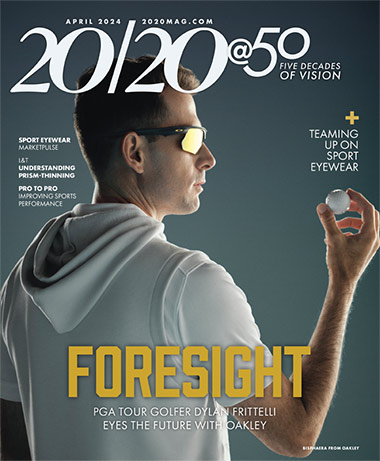
Small improvements in visual ability can produce significant performance advantages for athletes. Visual range, how well a person sees a target clearly over distance, is critical for athletes in almost any sport. Objects are harder to see the farther they are from the eyes, presuming emmetropia, due in part to the effects of blue light. A research paper from the University of Georgia, published in Exercise and Sport Science Reviews, found that nutrition can improve visual range (Harth, Jacob B.1; Renzi-Hammond, Lisa M.1,2; Hammond, Billy R. Jr2. A Dietary Strategy for Optimizing the Visual Range of Athletes. Exercise and Sport Sciences Reviews 51(3): p 103-108, July 2023. |DOI: 10.1249/JES.0000000000000318).
In the retina, organic pigments absorb light and transmit a signal to the brain as an image. Depletion of the organic pigments impedes this process. Carotenoids are organic pigments that build and maintain the thickness of the retinal pigment. Two important carotenoids are lutein and zeaxanthin, found in green leafy vegetables, such as kale, collard greens, spinach, some fruits and egg yolks. When absorbed by the body, these compounds collect as yellow pigments in the retina and act as a filter to protect the retina from harmful blue light.
While it’s known that retinal pigment protects against age-related eye disease, this research shows that increasing macular pigment optical density (MPOD) also can improve visual function. The research paper cites a 2014 study in which supplementing lutein and zeaxanthin, compared with a placebo, resulted in improved visual processing speeds, coincidence anticipation and reaction time. Certainly, improvements in these abilities could bolster athletic performance. By selective filtering of short-wave blue light, macular pigment (MP) has the potential to benefit other visual functions, such as reduction of glare discomfort or disability, enhancement of chromatic contrast and contrast sensitivity under intense light conditions that impact visual-motor ability at close range or indoors. Traditional athletic competitions often require clearly seeing distant targets outdoors, but modern settings, such as domed/indoor venues, virtual reality training and electronic sports (e.g., video gaming, drone racing) have different competitive environments and visual demands.
The researchers concluded that higher levels of MPOD could improve the visibility of a digital target through the absorption of short-wave light. LED monitors used in electronic sports produce higher intensities of blue light and emit higher energy blue light compared with other types of monitors. Electronic sport athletes commonly use blue light filters while competing. Athletes performing indoors are often exposed to bright lights, and increased MPOD can reduce their impact on athletes’ performance.
• Linda Conlin
Pro to Pro Managing Editor
[email protected]











